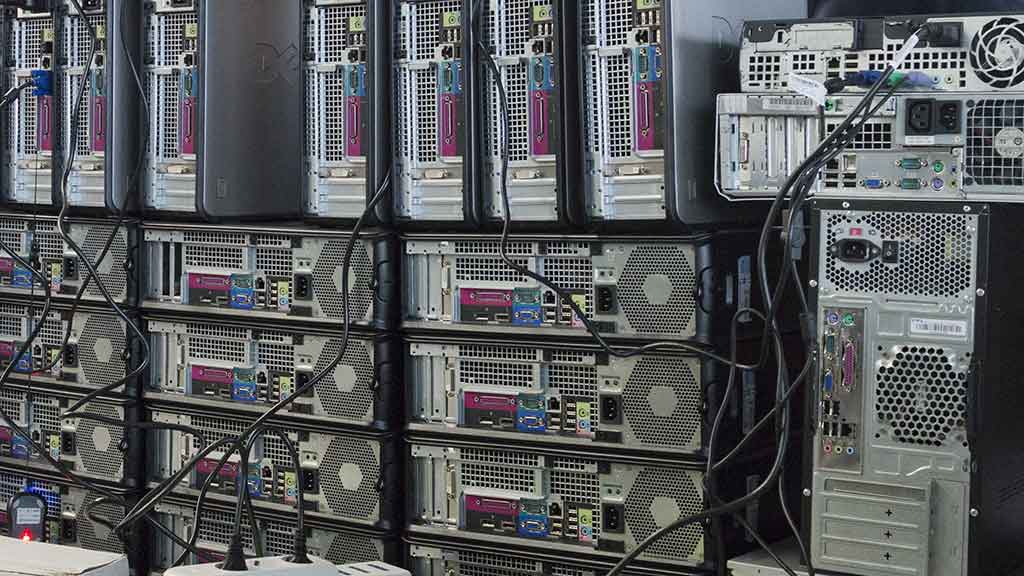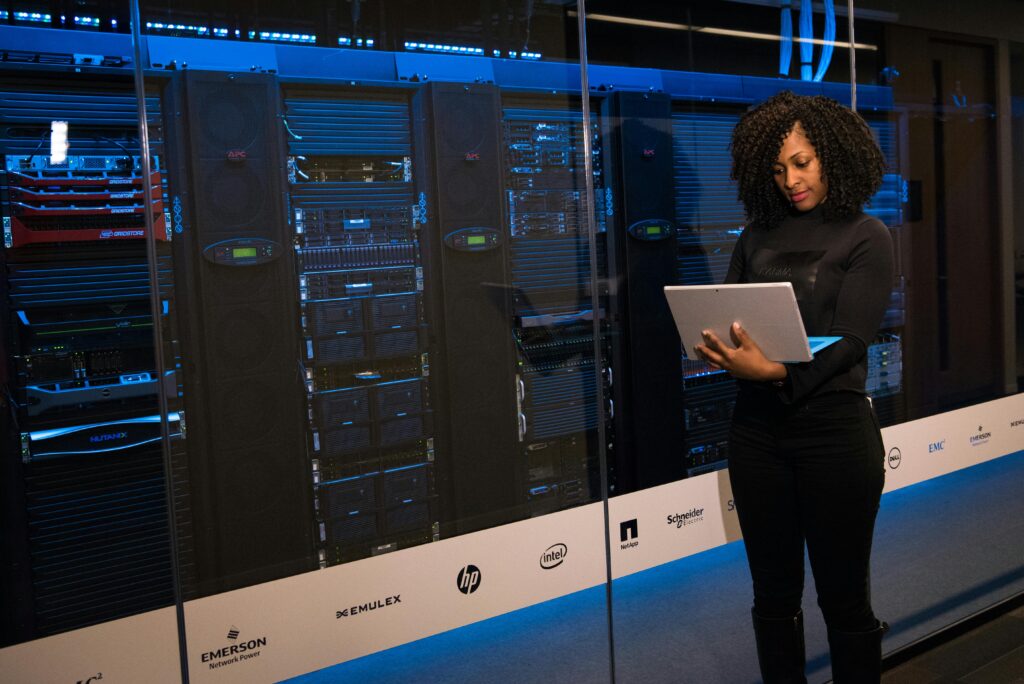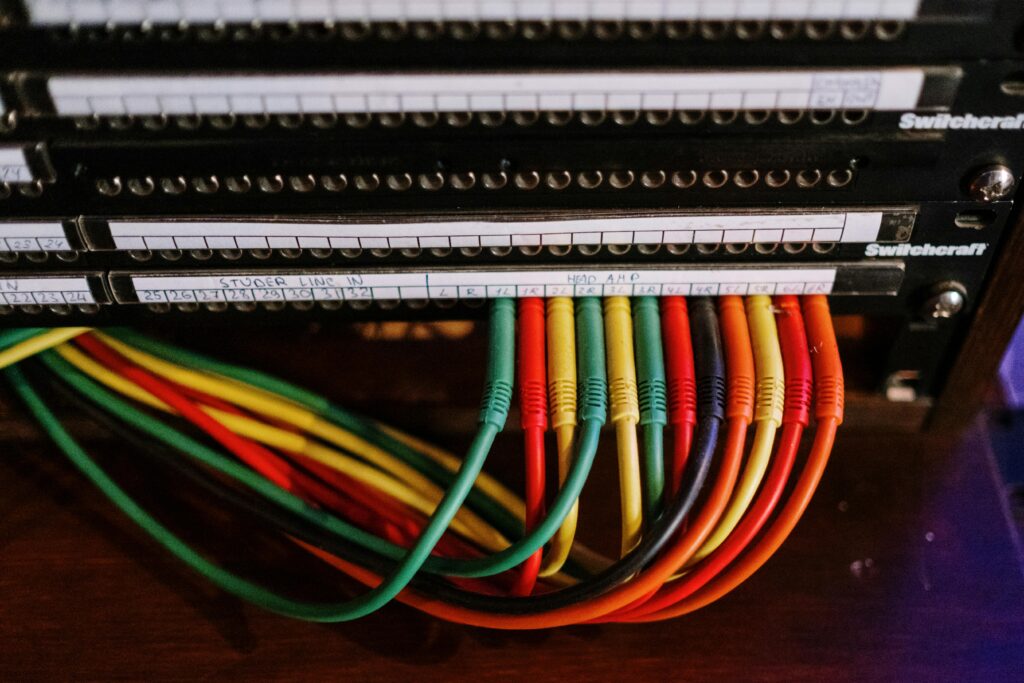DIY Remarketing for ROI – When and Why to Plan Your Upgrades Around Resale
When we talk about getting back returns from our assets, timing is everything with used IT remarketing and IT Asset Disposition (ITAD).
But oftentimes the upgrade itself is much more important than any related returns from equipment resale.
Regardless, in some cases, data center managers concerned with their overall asset returns will want to remarket assets the best that they can.
We’ll go over remarketing of IT assets, when it makes sense and why.
We will also cover how best to fit remarketing into the scope of data center operations when you decide to do it yourself.

The Four Important Factors for Resale Value of Your IT Assets
Remarketing is an art form. But, the process doesn’t have too many moving parts.
In a nutshell, there are only 4 main factors that determine how much you get back for hardware:
- Initial market value
- Age
- Rate of Depreciation
- Demand in the chosen secondary market
IT, in general, depreciates much faster relative to other asset categories. This is a big reason many companies overlook it. This is to their own detriment and a huge loss in opportunity.
Make Sure to Know Your Priorities Before Resale of IT Assets
Minimizing downtime and maximizing performance for precious end users is usually far more critical for big companies than the resale of old equipment.
Selling 100 servers could bring in six figures, yes. Then again, just one minute of downtime could easily cost at least seven figures.
Most large corporations aren’t going to make their upgrade or refresh decisions based around the depreciation of their assets. Data center managers for these companies maximize reliability and speed. Many times, th priority.
As soon as they’re reasonably certain the new high-performance hardware has demonstrated its reliability, they’re going to upgrade if they have the funds and wherewithal to do so.
Not a Huge Business? IT Asset Resale Value is Often More Important
If your enterprise is not some massive super-conglomerate operating with 5000 figures of gross profit a year, a 50% increase in return on a large portion of your IT assets is absolutely significant for data center management.
In many circumstances, the slope for performance benefits from an upgrade may not change much over time. Yet the market value of the old assets may shift very rapidly.
Essentially, you may not see a big performance difference regardless of when you upgrade, but you absolutely may see a large difference in returns depending on when you sell the old hardware.
Timing is All-Important for IT Asset Resale Value
When a new line of hardware is released, this often floods the secondary market with the past generation’s parts as companies focus on remarketing of IT assets.
This drives down value faster than Blackberry’s stock after the iPhone was released. A conscientious data center management team will keep their ear to the ground for new releases and how they relate to current equipment.
With a good idea of how to leverage asset resale, you have a leg up on the competition. Timing has a massive impact on the returns from IT assets.
Hit the arcade wheel at just the right time and your equipment can sell for a killing. Then again if you wait for just a little bit more time and you may drop from the jackpot to slim pickings.
When you talk about the reselling and the remarketing of IT assets, you would be remiss not to consider the powerful impact a solid IT asset disposition vendor can have on your bottom line.
Need some guidance? Call exIT TechnologiesIf your IT Assets are so old that resale isn’t much of an option due to lack of demand, IT Asset Disposition is the next choice.

IT Asset Disposition Services
IT Asset Disposition: This is for when the servers you previously viewed as priceless now more closely resemble that of a paperweight.
When this happens, and you are hanging onto servers that are near worthless, you’ve got to get these things out of your data center.
Old servers become something that you don’t want to deal with any longer. It’s equipment that you don’t want to look at, and you pretty much just want gone.
For companies like high-frequency traders that replace brand new equipment more frequently than Kim Kardashian buys new shoes, decommissioned equipment can actually be extremely valuable.
However, state of the art, rapidly updated data centers like this are the exception to the rule.
How Removing Your Outdated IT Assets Went from Expense to Revenue
In the past, removing and recycling your equipment was typically seen as an expense.
And actually, very few enterprises with high-end data center equipment prioritize remarketing.
A more recent trend is companies using IT asset disposition services, or ITAD.
These are the companies brave enough (or crazy enough) to specialize in taking out old equipment and selling it.
Whether a company handles the ITAD themselves through remarketing of IT assets, or delegates the task, they’ll often see worthwhile returns on efforts made to remarket IT assets that are no longer useful to the company.
Why Properly Disposing of Old IT Assets is Important
For one, the need to dispose of retired equipment, or E-waste, is more relevant in data center management than ever. Well, unless you want to live in one big global, smelly landfill.
Transparency Market Research predicts that by the year 2019 there will be over $40 billion and over 140 million tons of electronic equipment waste, or E-waste.
Data center managers in-the-know realize the value of the data center decommission services offered by ITAD companies. This is is mainly because of the safe and reliable destruction of data while at the same time helping to avoid any contribution to the big global landfill. Because of these things, the ITAD service industry is growing fast.
Why You Don’t take Old IT Assets to a Government-Run IT or E-Waste Recycling Facility
Theoretically, a company could just take their old equipment to a government IT or e-waste recycling facility. In reality, this is not ideal.
For one, at many of these locations, you’re just expected to leave your equipment sitting in a big pile of junk. Nobody guards this pile of junk. Which makes sense, because nobody guards junk. It’s junk.
But if somebody sees your IT equipment and thinks they can sell it before the government picks it up, this can be a problem. The next thing you know, Wall-E and his friend have your old drives on eBay.
Why Take the Risk of Non-Secure IT or E-Waste Recycling?
Does it make more sense to potentially get paid for someone else to do your IT or e-waste recycling? Or to leave the equipment, that was recently housing critically sensitive end-user and company data, in a big pile of junk with nobody guarding it?
No.
When you hire a company, like ours, that specializes in IT or e-waste recycling to come and take your old IT equipment. You get the benefits of secure data erasure practices and will probably also end up getting paid.
The Importance of Data Security During Data Erasure
With data security being such an important component of data center management, it’s no surprise that decision-makers are perfectly happy to pay good money for e-waste recycling services.
The benefits of e-waste recycling make it very much worth the cost.
Why the Secondary IT Market is Growing Quickly
The secondary IT market in the US is approaching nearly $100 billion. This is largely for two reasons.
The first is legacy systems.
A large part of data center management revolves around buying replacement parts for systems to upgrade or maintain them.
The preference would be to do this without having to expand support capabilities for newer equipment. A brand new NVMe drive might require a good deal of work to install within an old system, as it’s unlikely to be compatible with most old parts in use.
On the other hand, a SATA SSD could simply “plug and play” right into the system. This would keep operations flowing without any time investment.
In data center management, keeping everything running is a huge deal. Down-time just isn’t an option.
The second factor driving growth is limited budgets for procurement.
Refurbished equipment is perfectly acceptable for many purposes. It allows data center management to upgrade or maintain their systems without breaking the bank.
What About a Trade-in With the OEM?
Even with so much potential in the secondary market, many IT executives still dispose of their leftover equipment with an OEM. They do this either for a trade-in or an upgrade.
These trades appeal to decision-makers because they’re simple. However, think of selling a used car. You could trade it in with the dealer, but you’re probably going to get half as much as if you found a private buyer.
If data center management is largely a time efficiency practice, then ITAD is a natural choice. This is because with an ITAD company you don’t even need to look for a buyer, they do that for you.
To get the best bang for your buck, there are four steps to follow.
1. Have a plan in place
Planning is critical for effective data center management. As soon as possible, plan for the end of your asset’s lives.
Try and figure out which assets will be the most valuable down the line based on use and age. This is very helpful because then you can prepare to hit a nice window where upgrades make sense, but the asset hasn’t lost value yet.
It also frees you from worrying about your sale timing on equipment that’s going to have very little value in the future. Because you probably will only sell your used IT assets as an afterthought.
By planning in advance, enterprises can lessen depreciation (which can exceed 10% per month) losses as well as paying to store out of service assets before they sell.
Additionally, If a new generation of hardware is released, naturally tons of companies are going to upgrade.
You remember all those nifty processors you were planning to sell? After its successor was released and everyone upgraded, now there’s about 5 million of them on the market.
If you were looking for scheduled hardware releases, you would’ve seen this and sold your leftovers just before the new stuff came out.
To protect your sensitive data, know its path before it moves an inch. Map out and record the storage and handling process for your assets once they have been retired. Decide which of your employees is going to handle the data erasure.
If using a vendor, tell them what to expect ahead of time. This is kind of a no-brainer, but it’s a frequent occurrence that an enterprise drops a truckload of extra servers on their doorstep last minute and expects everything to go hunky-dory. It may not, so it is not worth the risk of trying it.
2. Keep Condition In Mind
Aside from good leather boots, almost any asset is going to lose value the more it is used.
For this reason, any enterprise that commits to recovering the most value from its assets should maintain the cleanliness and functionality of its equipment.
3. Keep Everything Complete and Organized
Don’t cannibalize any parts, as a system with missing parts will not bring in the same returns as a complete one.
Data center management should keep careful watch over technicians to ensure they don’t haphazardly separate components by stacking them or throwing them in a bin.
Keep any detachable materials that go with the material such as batteries or power supplies. You wouldn’t try and sell a car without an engine. Don’t sell a system without drives if you can help it.
4. Packing Perfection
Packing is often an afterthought for data center management, but it’s like flossing: A little extra time can prevent a lot of loss down the line.
A reputable ITAD vendor should be able to guide you through packing for each type of hardware you’re sending to ensure no harm comes to your assets. Many also provide packing services for you.
Keep a watchful eye over your team’s packing process. The last thing anybody wants is a new employee zoning out and missing half of your server so it breaks at the first pothole your shipping truck crosses.
Secure Data Erasure: Data Erasure or Physical Destruction?
You have two options if you want to avoid being torn alive by the press for being careless with E-waste. Those two options are data erasure and physical destruction.
Data erasure is superior to destruction in most cases, but it is far from being the unanimous choice.
The cost from a data breach in fines and bad press frequently reaches millions of dollars for large companies.
As a result, it’s understandable that data center management would want to completely destroy all of its retired drives. However, systems that are missing drives often lose about 25% of their value if sold whole, and sometimes more if the parts are sold separately.
The US government standard NIST 800-88 considers a one-pass overwrite as equivalent to destruction for all intents and purposes.
There is rarely a reason to destroy potentially valuable assets when many ITAD vendors will take care of data erasure at no extra cost to you, or at least a very marginal cost.
Speaking of ITAD vendors, there are vast differences between them; there are a few things to look for to ensure you’re choosing the right provider.
Choose the Right ITAD Provider
For most enterprises, it makes more sense to recruit an ITAD provider to take care of their leftover equipment. Look for the following:
Remarketing Expertise and Processing Speed This is kind of a no-brainer. They’re good at leveraging that wonderful secondary IT market, and they’re quick about it. Get your money, get the most money, and get it quickly.
R2 and ISO 140001 certifications for IT or e-waste recycling. These let you know that the company knows what they’re doing with your equipment. Just like you want a doctor with a medical license, you want an ITAD company with an R2 certification.
Geographic Proximity. Sure, a company might tell you they can service all your locations, but that doesn’t mean too much. They could theoretically service 4 locations from across the country; it just wouldn’t be ideal at all compared to the company with sites right next to all of yours.
Open Book Policy. You’re going to want to know all of that potentially incriminating technical data that nobody actually enjoys reading. Inquire about data erasure policies, value recovery policies, typical success rates with each part for refurbishment, payment terms, environmental policies and practices, as well as chain of custody and record-keeping processes. “Not obligated to disclose extra sale revenues” is a very telling statement to see in a policy list when vendor hunting. Avoid it like the plague.
Longstanding Reputation. It is common for ITAD companies to find extra value with parts. It’s extremely common for certain companies in the industry to keep this extra revenue without cutting data center management in on the profits. Choose a vendor with years of experience as an honest company. Don’t get skimped.
Conclusion/Summary
Data center management is a nuanced practice, as each data center is as unique and complex as a spider’s web.
Every data center manager has different responsibilities for a unique configuration, just like every pitcher in the MLB throws the ball differently.
But just as every pitcher still throws the ball to hit the glove, every data center manager goes through the same phases of upgrades, monitoring, migrations, relocations, and decommissions.
While the approach to each of these may shift and vary, the principles guiding them are the same. Just as we want to throw the fastest ball the most accurately, so do we want to maximize uptime, minimize expenses, and optimize performance.
To that end, follow these steps:
1. Plan for your assets from the point of procurement
2. Keep your total cost of ownership to a minimum with only the most effective services needed
3. Decommission your hardware optimally to maximize returns
4. Migrate using the strategies that have proven the most reliable for enterprises in the past
5. Replace equipment at the ideal time when relevant
6. Use IT asset disposition services when it makes sense to get returns from equipment
7.Recycle your IT assets responsibly without investing unnecessary resources
Any data center management strategy that consistently implements these practices proactively will see returns far beyond what an enterprise that is impulsive and reactive will.
Want professional asset management guidance tailored specifically to your enterprise?
Contact exIT Technologies todayAbout Ex-IT Technologies
exIT Technologies is a trusted firm with a commitment to environmental compliance and a long history of success assisting with data center decommissions, migrations, and liquidations for enterprises all across the United States.





